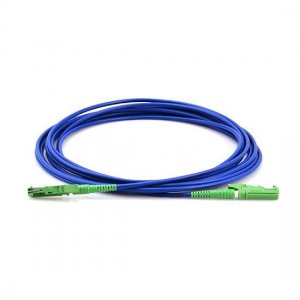
# Armored Fiber Optic Cable: A Comprehensive Guide
## Introduction to Armored Fiber Optic Cables
Armored fiber optic cables represent a significant advancement in telecommunications infrastructure, offering enhanced protection and durability compared to standard fiber optic cables. These specialized cables incorporate protective layers that shield the delicate optical fibers from environmental hazards, physical damage, and mechanical stress.
## What Makes Armored Fiber Optic Cables Different?
The primary distinction of armored fiber optic cables lies in their robust construction. While traditional fiber optic cables contain glass or plastic fibers surrounded by protective coatings, armored versions add extra layers of protection:
– Metal armor (typically steel or aluminum)
– Corrugated steel tape
– Interlocking metal armor
– Additional protective jackets
These protective elements make armored cables ideal for harsh environments where standard cables might fail.
## Types of Armored Fiber Optic Cables
### 1. Interlocking Armored Cables
Featuring a helical metal armor that provides excellent flexibility while maintaining protection, interlocking armored cables are commonly used in indoor and outdoor applications where frequent bending might occur.
### 2. Corrugated Armored Cables
With a corrugated steel tape armor, these cables offer superior crush resistance and are particularly suitable for direct burial applications or areas with heavy mechanical stress.
### 3. Lightweight Armored Cables
Designed for applications where weight is a concern, these cables use thinner armor materials while still providing adequate protection against rodents and minor mechanical impacts.
## Key Advantages of Armored Fiber Optic Cables
The enhanced protection of armored fiber optic cables translates into several significant benefits:
– Superior physical protection against crushing, impact, and rodent damage
– Increased resistance to environmental factors (moisture, temperature extremes)
– Longer lifespan in harsh conditions
– Reduced maintenance requirements
– Enhanced security against intentional damage
– Suitable for direct burial without additional conduits
## Common Applications of Armored Fiber Optic Cables
Armored fiber optic cables find use in numerous demanding environments:
### Industrial Settings
Manufacturing plants, oil refineries, and mining operations benefit from armored cables that can withstand chemical exposure, extreme temperatures, and physical hazards.
### Outdoor Deployments
For aerial installations, direct burial, or underwater applications, armored cables provide the necessary protection against environmental stressors.
### Military and Government Facilities
High-security installations often require armored fiber optic cables to prevent tampering and ensure reliable communication in critical situations.
### Urban Infrastructure
Keyword: armored fiber optic cable
In metropolitan areas where cables might face accidental damage from construction or other urban activities, armored solutions offer peace of mind.
## Installation Considerations for Armored Cables
While armored fiber optic cables offer superior protection, they require special installation considerations:
– Bending radius: Armored cables typically have larger minimum bending radii than standard cables
– Termination: Special tools and techniques are needed for proper termination
– Weight: The additional armor increases cable weight, requiring proper support structures
– Grounding: Metal armor must be properly grounded to prevent electrical hazards
## Choosing the Right Armored Fiber Optic Cable
When selecting an armored fiber optic cable, consider these factors:
– Environmental conditions (temperature, moisture, chemical exposure)
– Mechanical stress requirements (crush resistance, impact protection)
– Installation method (aerial, direct burial, conduit)
– Fiber count and type (single-mode or multi-mode)
– Compliance with industry standards and regulations
## Maintenance and Troubleshooting
While armored cables require less maintenance than standard fiber optic cables, regular inspections are still important:
– Check for visible damage to the outer jacket
– Inspect grounding connections for metal-armored cables
– Monitor performance metrics for any degradation
– Address any rodent activity near cable runs
## Future Trends in Armored Fiber Technology
The armored fiber optic cable market continues to evolve with:
– Development of lighter yet stronger armor materials
– Integration of smart monitoring capabilities within the armor
– Improved flexibility without compromising protection
– Enhanced fire-resistant and low-smoke zero-hal
